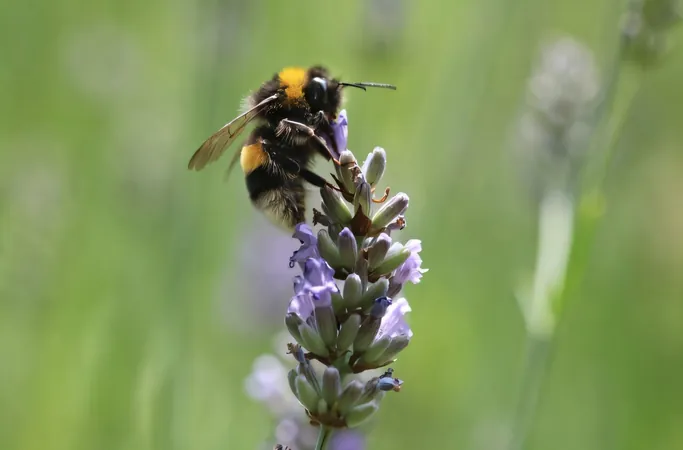
Shocking New Study Unveils Complex Dangers of Pesticides on Bees – Are Our Crops Putting Them at Risk?
2025-01-15
Author: Li
Shocking New Study Unveils Complex Dangers of Pesticides on Bees – Are Our Crops Putting Them at Risk?
A groundbreaking study has revealed that the impact of neonicotinoid pesticides on bumble bees is far more intricate than scientists previously understood. This crucial research, published in the journal *Science of The Total Environment*, highlights distinct effects on various parts of a bumble bee’s body, shedding light on why pesticides cause a range of harmful consequences.
Researchers from Queen Mary University of London found that the neonicotinoid pesticide clothianidin disrupts multiple bumble bee organs and systems in strikingly different ways. This complex interaction unveils why the harmful impacts of pesticides are not just straightforward – they can lead to issues such as impaired mobility, decreased learning capabilities, and weakened immune responses among these crucial pollinators.
Targeted Effects – A Deeper Look
In an innovative twist, the study exposed bumble bees to a dose of clothianidin that mirrors real-world environmental exposure. The results were staggering, with an astounding 82% of the shifts in gene activity observed as being specific to individual tissues.
Professor Yannick Wurm, one of the researchers, stated, “Each tissue we examined was severely affected by the pesticide.” He emphasized that the widespread toxicity helps explain the multifaceted challenges facing bees, from hindered movement to impaired cognitive function.
Neonicotinoids like clothianidin are prevalent in agriculture for pest control; however, they pose alarming risks even in low concentrations. By utilizing advanced molecular diagnostic techniques, often reserved for medical research, the team was able to identify the specific molecular pathways that are disrupted by pesticide exposure.
For example, within the brains of bees, critical genes responsible for ion transport were impacted, while gene activity linked to movement in their hind femur showed pronounced changes. Moreover, the detoxifying functions of the Malpighian tubules – which act as kidneys – were notably diminished, further implicating these chemicals in detrimental health outcomes.
A Call for Urgent Action
These results raise serious concerns about conventional pesticide risk assessments, which typically fail to account for tissue-specific damage that can lead to sub-lethal effects on pollinator populations. According to Dr. Federico López-Osorio, a co-author of the research, "Traditional assessments do not adequately capture the extent of these impacts on vital ecosystems."
The study draws parallels to patterns of deterioration observed in aging and cancer, indicating a significant threat to bumble bee health. Dr. Alicja Witwicka, the lead author, emphasized, "Our findings illustrate that every tissue is compromised, severely undermining its essential functions. This research compels us to rethink how we assess, regulate, and apply pesticides."
This urgent call to action is set against a backdrop of global concern over biodiversity loss, as citizens and governments alike grapple with the challenges of protecting natural ecosystems reliant on pollinators. As we face a potential crisis in our food production systems, reevaluating our pesticide practices may be the key to safeguarding the bumble bees essential for the fruits and nuts we cherish and the overall health of our environment.
Join the conversation on how we can protect these invaluable pollinators and ensure sustainable agricultural practices moving forward – the health of our ecosystems depends on it!

 Brasil (PT)
Brasil (PT)
 Canada (EN)
Canada (EN)
 Chile (ES)
Chile (ES)
 Česko (CS)
Česko (CS)
 대한민국 (KO)
대한민국 (KO)
 España (ES)
España (ES)
 France (FR)
France (FR)
 Hong Kong (EN)
Hong Kong (EN)
 Italia (IT)
Italia (IT)
 日本 (JA)
日本 (JA)
 Magyarország (HU)
Magyarország (HU)
 Norge (NO)
Norge (NO)
 Polska (PL)
Polska (PL)
 Schweiz (DE)
Schweiz (DE)
 Singapore (EN)
Singapore (EN)
 Sverige (SV)
Sverige (SV)
 Suomi (FI)
Suomi (FI)
 Türkiye (TR)
Türkiye (TR)
 الإمارات العربية المتحدة (AR)
الإمارات العربية المتحدة (AR)